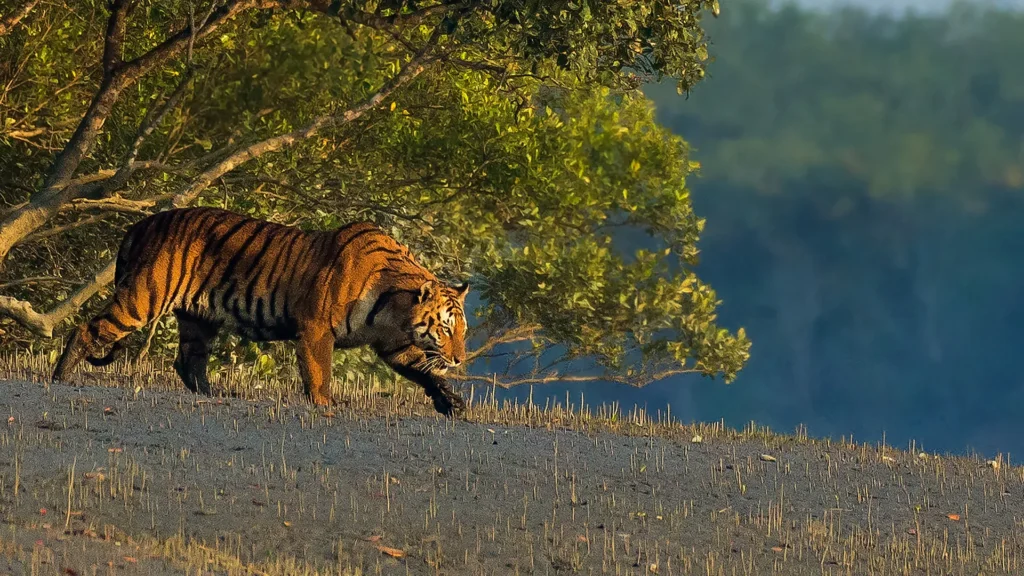Top 5 Must-Do Activities in Sundarbans Tiger Reserve: A Complete Guide
Megha

Step into the Realm of Mist, Matted Mangroves, and the Home of Royal Watchers
Imagine while you are sailing up through the matted mangrove trees to the call of a kingfisher. And somewhere in the vicinity there is a Royal Bengal Tiger observing you. Hello to Sundarbans Tiger Reserve where nature may have its own script.
Located in the largest mangrove forest on the earth, at the confluence of Ganges
Brahmaputra and Meghna rivers, several small islands and villages in this UNESCO World Heritage Site can be regarded as a travel destination or merely a presence, a pulse and an immersion in one of the most enticing ecosystems on earth for tiger tour safaris.
When you travel, make sure to go deeper than the surface.
These are the top 5 experiences of Sundarbans that you should not miss to complete the experience of the Sundarbans in your heart.
-
Shadow Trails: Track the Elusive Tiger with a Local Forest Tracker
Let’s start with the well known typical – but with a twist.
Boat safaris are good but there is no experience like going into the wild with a local tracker who understands the jungle even to the extent his or her palm lines. Most of the guides used to be honey gatherers or fishermen but now they are forest tellers.
They are able to read new pugmarks, to hear alarm whistles of deer or langurs, to scout claw marks made by tigers on tree trunks.
The sense of doing it at ground level or rather walking (or cruising) into the tiger territory with someone who can interpret the signs of the animals, is spine-tingling even when one does not see the animal. It is a little survival training, and absolutely memorable.
-
Floating Villages & Fishermen Tales: A Rural Life Safari
What is beyond the mangroves and creeks are small villages in between the tide and time. The rhythm of the rivers in this case runs through all the homes, meals, and even narrations.
Spend a day in one of such villages: have a traditional meal, attempt at palm mat weaving or fish from a net in the river. Talk to the locals, like the grandmother immured to the island and familiar with each current and tide.
It is not a simple visit but it is cultural immersion. And each rupee that you spend is used to provide a financial base through which community-based ecotourism can be provided, helping locals care for their surroundings rather that exploit them.
-
Secret Sundarbans: Dawn Cruise through Hidden Waterways
Skip those noisy and commercial boat rides which mostly irritates and disturbs the aquatic life. Rather, choose a micro eco-boat cruise at dawn and a world of a whispering water and awakening forest
When the mist hugs the water and the sky waits gold, drift through slender undocumented tributaries that are curved with mangroves. Spot otters in the water, crocodiles on mudbanks, perhaps a swimming tiger, or a diving kingfisher.
This is Sundarbans in its purest- raw, mysterious, and totally magical.
-
Sundarbans After Dark: Stargazing & Mangrove Soundscapes
Unlike most wildlife destination with artificial night safaris, Sundarbans provides a sound safari.
Sleep at an eco-lodge that has a viewing deck, and be far off the lights of the city. The night is dark, the atmosphere is thrilled with the elemental sounds of croaking frogs, rustling leaves, and far-off bird whistling.
Join a guided night acoustic walk with trained naturalists, who interpret these sounds, from the hooting of an owl, or the slithering of a monitor lizard.
It is more about what you feel and hear rather than what you see. It is contemplative, spooky and fantastic all at the same time.
-
Mangrove Detective: Volunteer for Conservation
Want to do more than sightseeing? Unite with nature. Various wildlife research organizations and NGOs working in the Sundarbans have also short-term volunteering opportunities, although participation involves conservation. You may assist in trapping cameras, counting crabs or birds or clear plastic-clogged waterways. Some programs also teach GPS mapping, drone use or basic DNA sampling techniques used by forest officials.
It is a way of getting closer to the ecosystem, and at the same time, your participation subsidizes the local conservation and the rangers funding.
Conclusion: The Wild Doesn’t Just Call—It Waits
Sundarbans is not just a background to your photographs, but a living, breathing presence that transforms into different experience.
Here, the tiger is a metaphor, water is a narrator, and the sound of each rustle has a secret.
And whether you are following tiger footsteps, sharing tea with a river guide at sunset or stargazing under starry skies in the silence and stillness of night – you are not just in the Sundarbans.
You’re becoming part of it.







